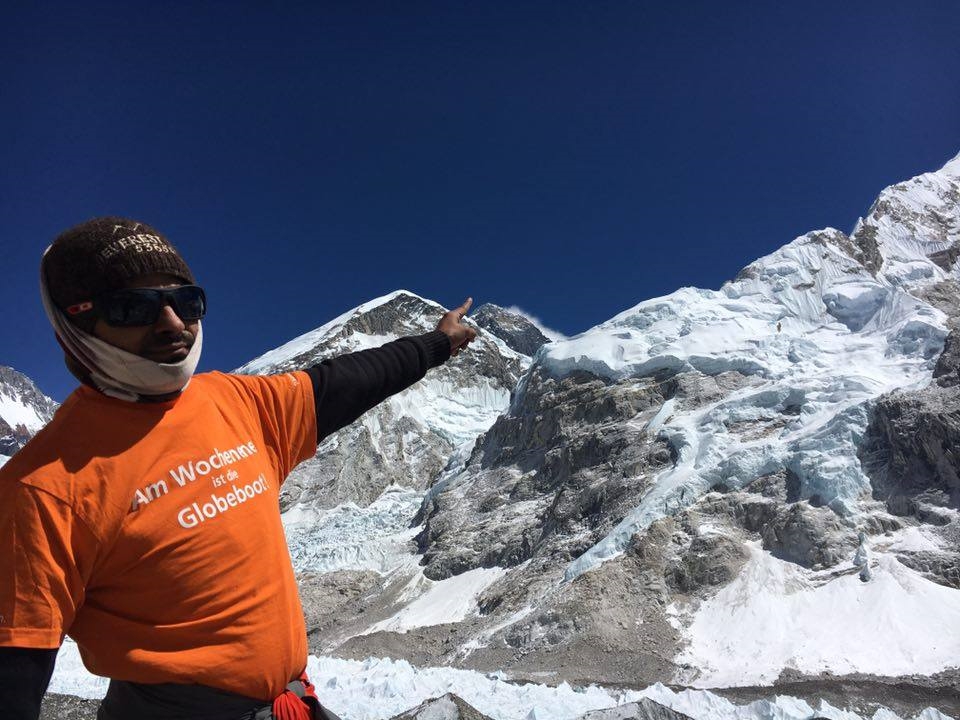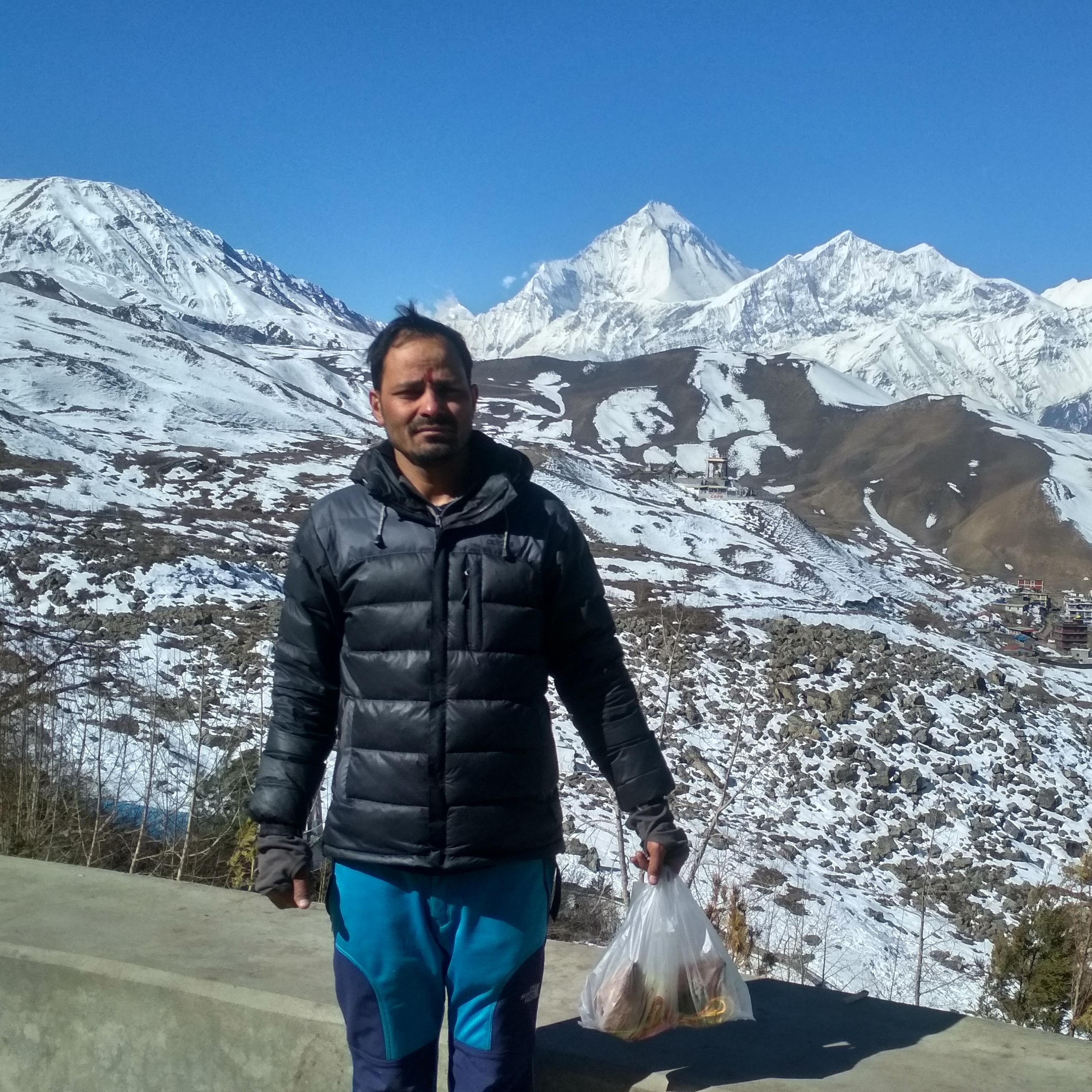Why is Everest Base Camp Trek So Popular?
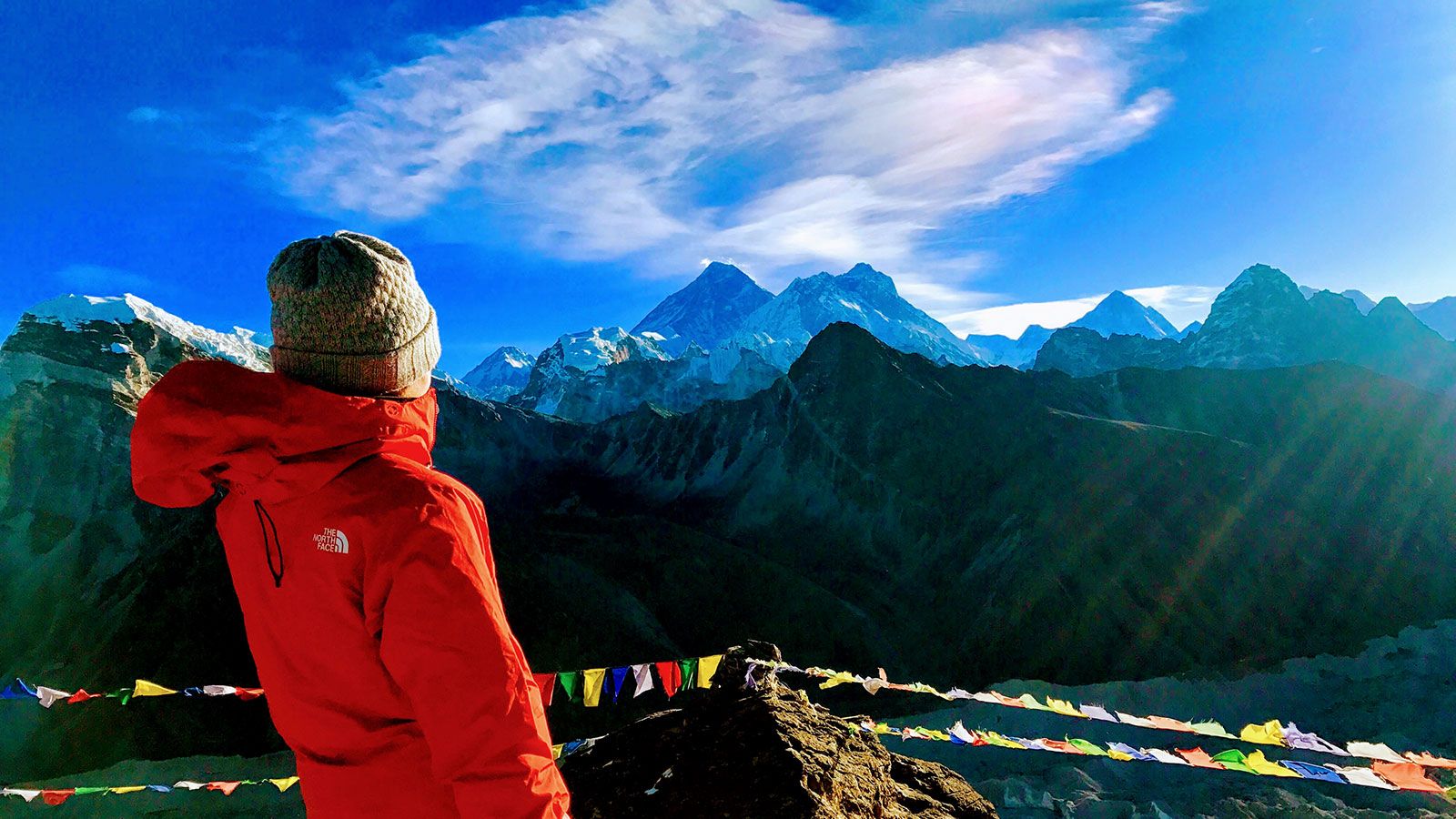
Want to know why the trek to Everest Base Camp is so well-liked? If so, read this article to learn about the main factors influencing the popularity of trekking to Everest Base Camp.
The Everest Base Camp (EBC) trek is without a doubt the most well-liked trekking route in Nepal. Every year, over 50,000 individuals from various parts of the globe gather in the Everest region to begin their ascent to the world’s highest peak’s base camp. By visiting the museums and monasteries along the way, visitors can learn about the stunning, distinctive Sherpa culture in addition to the region’s breathtaking scenery. Although you can only fully understand the reasons for this trek route’s popularity by traveling there and experiencing it yourself, we’ve compiled a list of five incredible reasons that make this EBC an opportunity of a lifetime.
Flight from Kathmandu to Lukla
Similar to the majority of treks in the area, the start of EBC involves flying from Kathmandu to Lukla. While there are other ways to reach the Khumbu region, this is the quickest and most straightforward. Although the flight from Kathmandu to Lukla is frequently regarded as the riskiest in the world, this terrifying truth is easy to forget on a clear, sunny day. This flight is sure to be ethereal as it soars above lush hills, winding dirt roads, charming little towns, and through wisps of cloud vapor.

Namche Bazaar
Namche Bazaar, situated at an impressive elevation of 3,500 meters, serves as the staging area for expeditions to Everest and other nearby mountains. This well-known town doubles as a thriving marketplace, offering a wide range of goods from fine Tibetan handicrafts to gear for trekking and climbing. An amphitheater like Namche, which is perched atop an arch-shaped mountain, exudes a sense of calmness from the Himalayas and a surreal atmosphere. It is also the greatest location to observe and engage with the rich and distinctive culture of the Sherpas, the real mountain people.
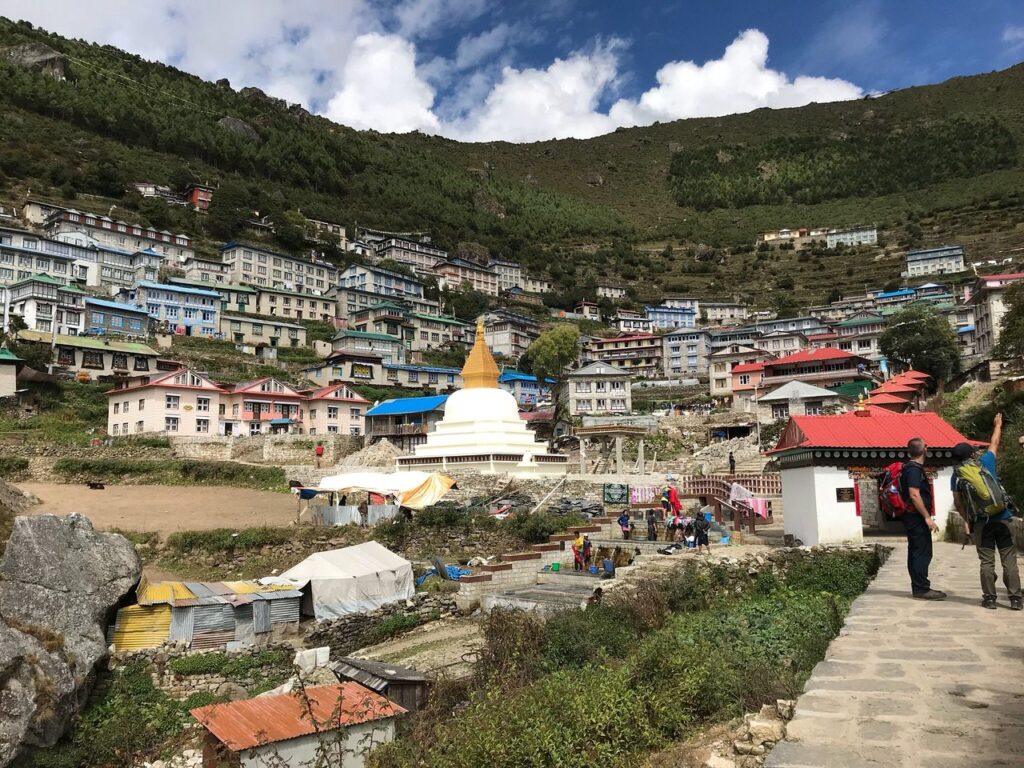
The View of Everest
It is truly amazing to see Everest, the highest mountain in the world. Elevated to an astounding 29,032 feet (8,849 meters) above sea level, Everest looms majestically over the horizon. There are several places to see the majesty of Everest and the surrounding Himalayan range, including the base camp and higher elevations along the trekking routes. The view of Everest’s snow-capped summit poking through the clouds is a monument to the wonders of nature and the unwavering spirit of human exploration.
The experience is not only about the breathtaking sight for those who make the difficult trek to see Everest up close; it’s also about feeling a deep sense of accomplishment and reverence for the natural world. It’s a celebration of our ability to seek adventure and push the limits of what we think is possible, as well as a reminder of our own insignificance in the face of such powerful forces of nature.
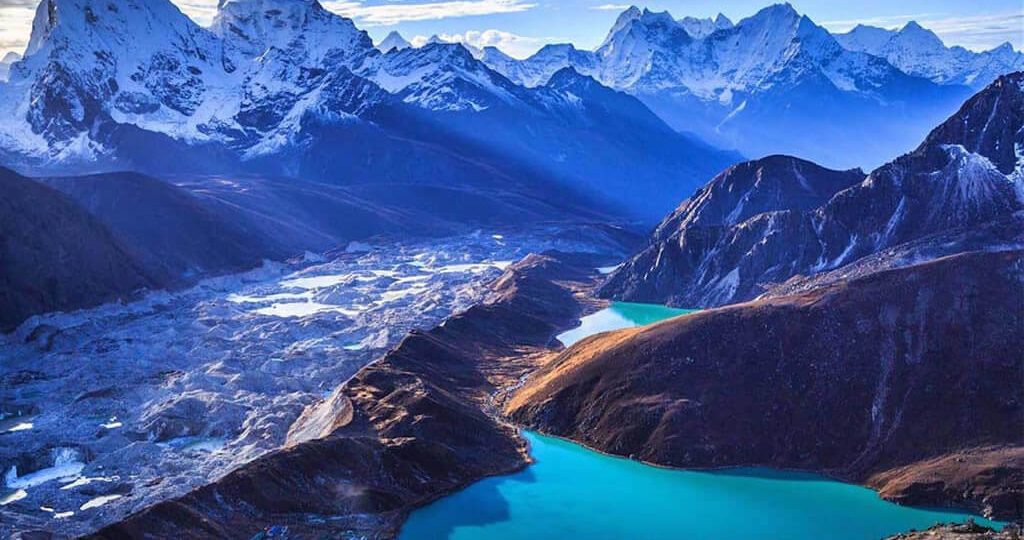
Comfortable Trekking Route in Everest Base Camp
The traditional Everest Base Camp Trek via the South Side, beginning in Lukla, is one of the coziest trekking routes to Everest Base Camp. This route strikes a nice mix between conveniences, accessibility, and natural beauty. In addition to the breathtaking Himalayan landscapes, Everest Base Camp is also well known for its cozy hiking paths. This is a challenging and pleasurable journey with clearly marked and well-established trekking routes that never become confusing until the very end.
It is uncommon to fear getting lost while traveling. Additionally, a lot of other hikers pass by every moment; if you have any questions, feel free to ask. Be at ease! They point the way correctly and are kindly and helpful. Trekkers can enjoy comfortable lodging and meals along this well-established route, which is lined with tea houses. But it’s crucial to be ready for difficulties brought on by altitude and to hike sensibly, adhering to the advice of knowledgeable guides and taking the required safety and health precautions.
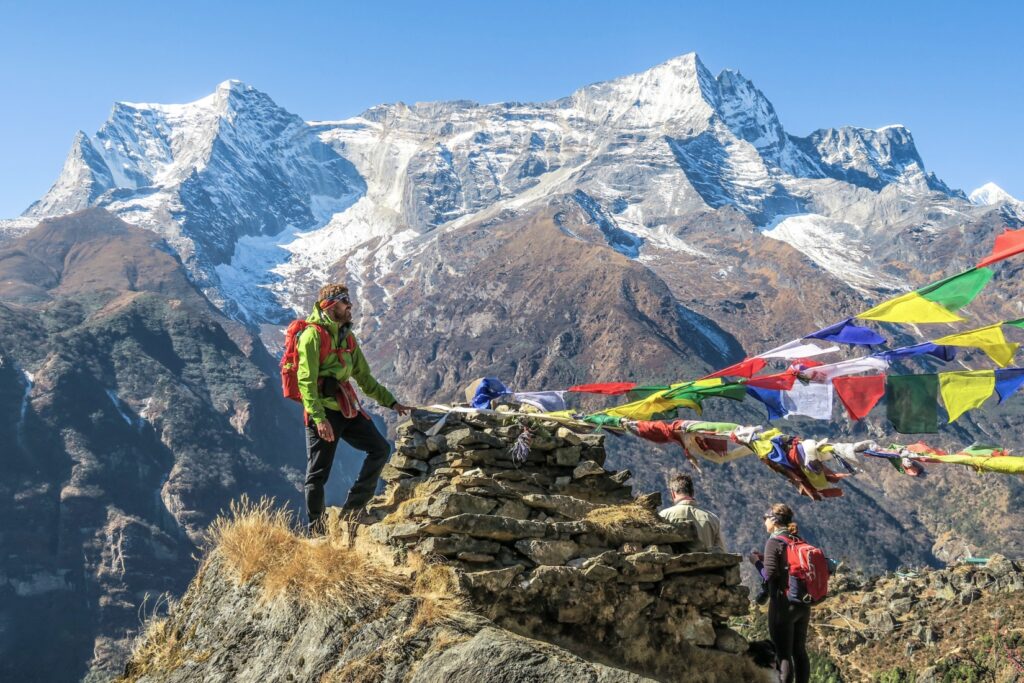
Great Combined Treks and Expeditions
The classic Everest Base Camp Trek, which passes through quaint Sherpa villages, rhododendron forests, and untamed mountain scenery, is the first leg of this combined trek and expedition. The trek begins in Lukla and ascends gradually through Namche Bazaar, Tengboche, Dingboche, and Gorak Shep. En route, it provides breath-taking views of Lhotse, Nuptse, Everest, and other Himalayan peaks. The expedition portion of the trip starts when you arrive at Everest Base Camp and take in the breathtaking view of the Khumbu Glacier’s massive icefall. Trekkers travel to Lobuche Village, where they gear up for the difficult but doable climb of Lobuche East Peak (6,119 meters), which is appropriate for experienced climbers who have some prior mountaineering experience.
Technical parts of the Lobuche East climb, such as steep snow and ice slopes, are present, but the summit offers climbers sweeping views of Everest, the Khumbu Glacier, and neighboring peaks. Climbers can safely reach the summit and experience the pride that comes with conquering a Himalayan peak with the help of knowledgeable Sherpa guides and enough time for acclimatization. Trekkers and aspiring mountaineers can combine the famous Everest Base Camp Trek with the thrilling Lobuche East Climbing to get the best of both worlds: the renowned trek to Everest Base Camp and the adrenaline of a Himalayan summit climb. Amidst the highest peaks on earth, the journey offers priceless memories, breathtaking scenery, and a deep sense of accomplishment.
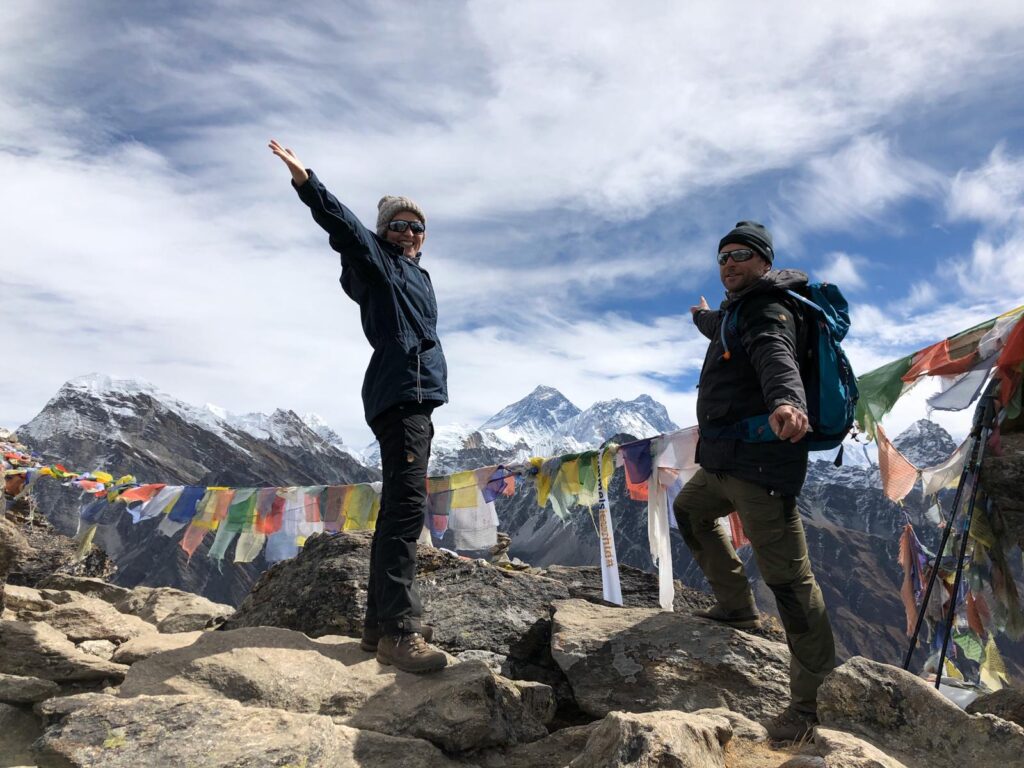
Sherpa Culture and Lifestyle
Any walk or expedition gains depth by delving into the rich and satisfying experience of learning about Sherpa culture and way of life. Native to Nepal’s Himalayan region, the Sherpas are an ethnic group renowned for their tenacity, skill at climbing, and rich cultural legacy. You will come across Sherpa villages tucked away among the high peaks as you hike through the Khumbu Valley on your way to Everest Base Camp. The villages of Namche Bazaar, Khumjung, and Tengboche provide an understanding of Sherpa customs and culture.
Deeply ingrained in Tibetan Buddhism is Sherpa culture, as evidenced by the mani stones with Buddhist mantras engraved on them and the vibrant prayer flags that billow in the mountain breeze. Sherpas congregate in monasteries, like the well-known Tengboche Monastery, as spiritual hubs for religious events and celebrations like Mani Rimdu, Dumje, and Losar.
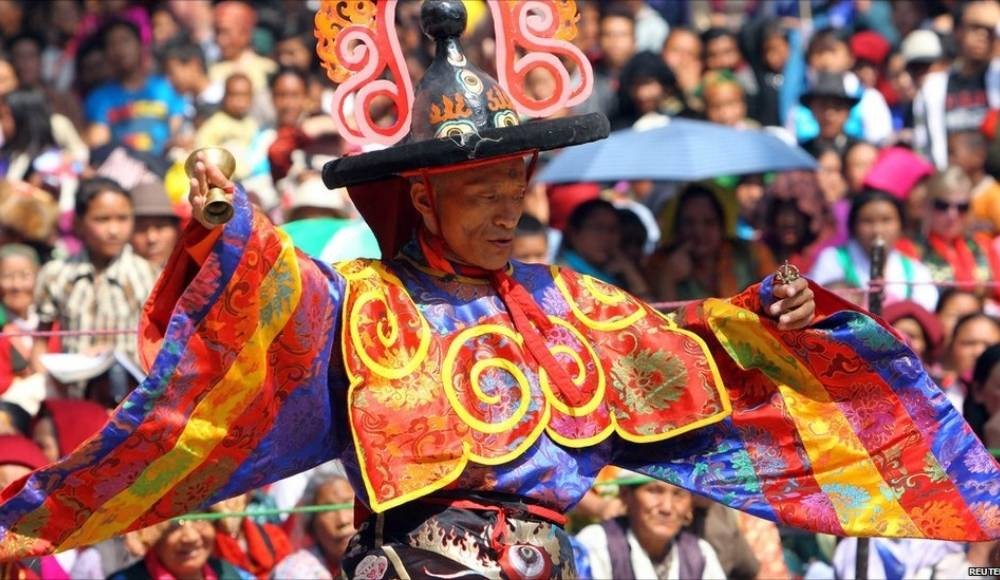
The Tengboche Monastery
One of the most important monasteries in the Everest region, Tengboche Monastery (also called Dawa Choling Gompa) serves as a hub for both spiritual and cultural activities. Lama Gulu founded the monastery in 1916, but it was destroyed by an earthquake and rebuilt in 1934. Tengboche Monastery has experienced numerous expansions and renovations over the years, growing to become a well-known Tibetan Buddhist center in the Khumbu area. Sherpas and Tibetan Buddhists attach great spiritual significance to Tengboche Monastery. Being the most prominent monastery in the Khumbu area, it acts as the center of the local Sherpa community’s religious and cultural activities. The monastery’s resident monks perform daily rites, prayers, and ceremonies, such as the well-known Mani Rimdu festival, a vibrant and elaborate religious celebration held annually in the autumn.
The monastery’s architecture, which combines Sherpa and traditional Tibetan design elements, is distinguished by its colorful murals that portray Buddhist symbols and deities, whitewashed walls, and finely carved wooden beams. Along with other religious objects, the Du-khang, the main prayer hall, is home to a sizable Buddha statue. Tengboche Monastery is a popular stop for trekkers on the Everest Base Camp route because of its serene atmosphere and expansive views of the surrounding mountains. From Namche Bazaar, the monastery is reachable by a beautiful trek that takes about five to six hours. Though it’s important to respect local customs and guidelines, visitors are welcome to explore the monastery grounds and observe prayer ceremonies. In addition to its religious significance, Tengboche Monastery has breathtaking views of some of the highest peaks on earth. One of the highlights of any trek in the Everest region is the monastery’s breathtaking view of Ama Dablam, Everest, and other Himalayan giants. Trekkers can get a glimpse of the spiritual center of the Everest region and have a peaceful, unforgettable experience at Tengboche Monastery, nestled amidst the majestic Himalayas.
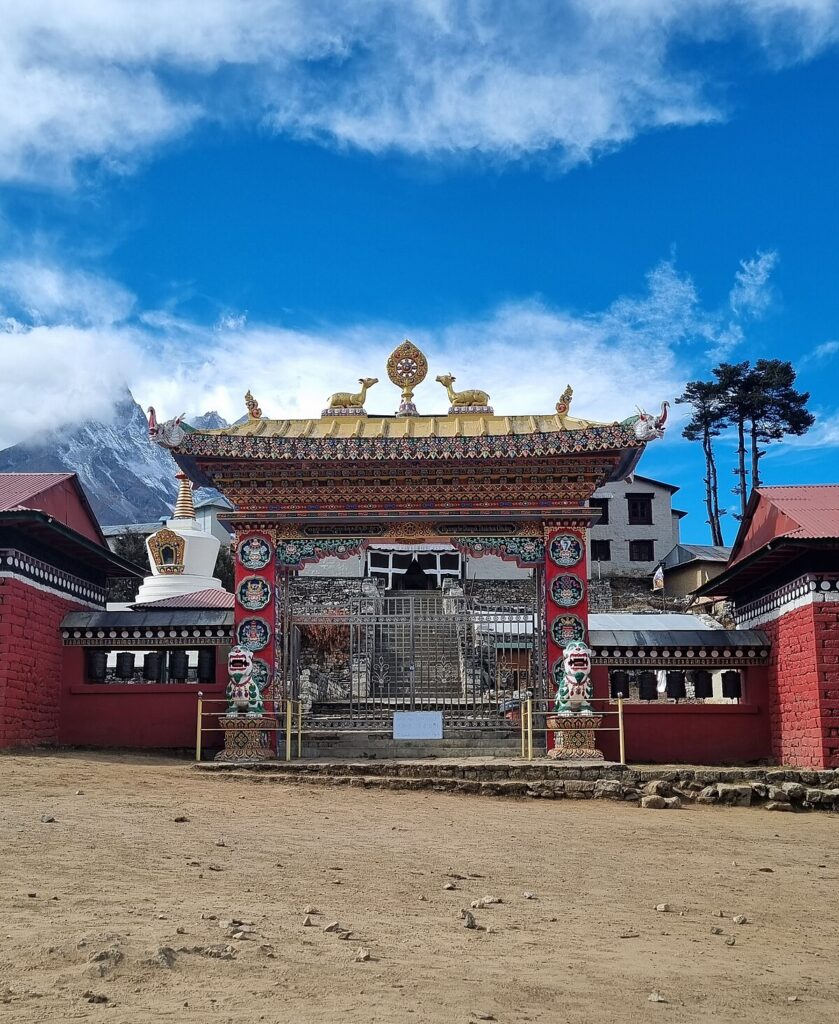
Sagarmatha National Park
Sagarmatha National Park is home to an impressive array of wildlife. The park is home to a variety of ecosystems, such as high-altitude barren landscapes, alpine meadows dotted with wildflowers, and temperate forests of pine, birch, and rhododendron. A diverse range of wildlife is found there, such as the elusive snow leopard, Himalayan tars, musk deer, and more than 200 different species of birds. Sagarmatha National Park is rich in cultural heritage as well as natural wonders. The Sherpa people, who are well-known for their skill at mountaineering and their rich cultural traditions, live in the area. Discover the customs and spiritual practices of the Sherpa people by touring monasteries, historic Buddhist stupas, and traditional Sherpa villages.
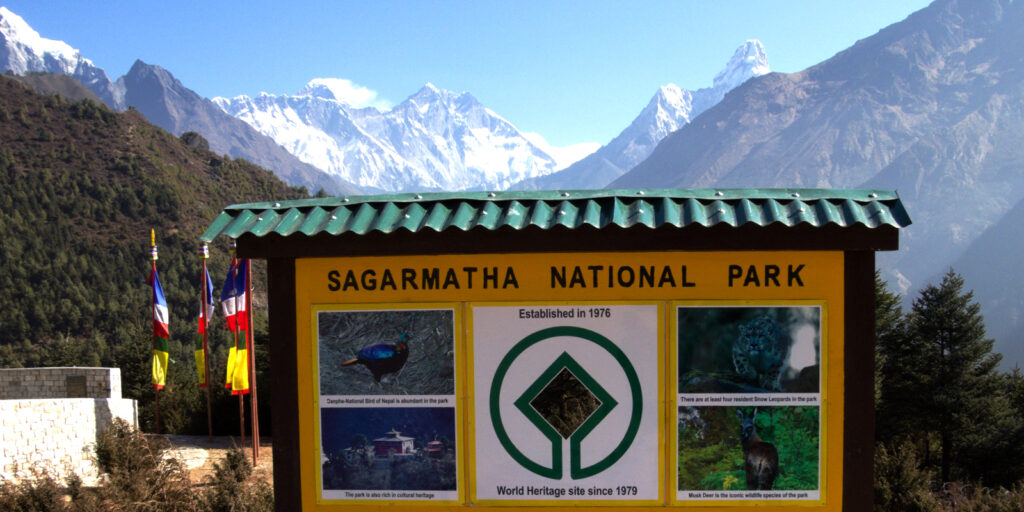
Trekkers’ paradise, Sagarmatha National Park is home to some of the most famous trekking routes worldwide. The most well-liked trekking route in the park is the Everest Base Camp Trek, which passes through stunning Sherpa villages, rhododendron forests, and high mountain passes. Other noteworthy treks that offer distinctive vistas of the Himalayan terrain are the Everest View Trek, Everest Three High Passes Trek, and the Gokyo Lakes Trek. Sagarmatha National Park offers climbers one of the best chances to reach some of the highest peaks on the planet. Climbers travel from all over the world to climb Mount Everest, which is the ultimate challenge at 8,848 meters (29,029 feet) in elevation. Other noteworthy peaks in the park are Cho Oyu, Ama Dablam, Lhotse, and Nuptse, which provide a variety of climbing opportunities for both seasoned mountaineers and aspiring climbers.

